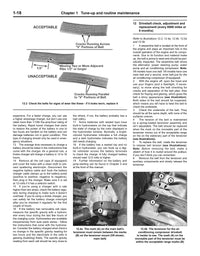Blown Head Gasket: What To Look For
Your car’s cylinder head gasket is a true multi-tasker, because it has to keep oil, coolant, and engine compression separate, all at the same time. To understand the basics, check out our detailed breakdown: What is a head gasket?. It is under extreme stress as soon as you start your engine, so when it fails, bad things happen, which means spotting when something is beginning to go wrong is vital, because failing to notice can result in major engine damage. For more on early warning signs, see 5 signs you have a blown head gasket and how to prevent it.
Clues that your head gasket is failing include blue or white smoke from the exhaust pipe, a rise in engine temperature, and subsequent increase in activity from the cooling fans. Learn more about specific head gasket symptoms and troubleshooting in our dedicated post on Troubleshooting head gasket problems in your 2017 Ford Edge.
A gasket can fail in several ways, each resulting in different symptoms. Here, Haynes explains how you can identify which part of your cylinder head gasket is failing:
1) Coolant to outside leak
A leak to the outside can be tricky to spot if the leaking coolant dribbles to the ground while driving or simply evaporates. For a deeper dive into the different types of head gasket failures, read 7 different ways a head gasket can fail.
What to Look For:
-
Dribbles or staining from coolant on the side of the engine
-
A telltale leak of coolant from near the exhaust manifold
2) Compression leak to oil galleries
If the head gasket fails between the cylinder and an oil gallery, compression gasses will enter the oil system and pressurize the crankcase. Learn how to interpret blue smoke and oil consumption issues in our guide to engine troubleshooting basics.
What to Look For:
-
Blue smoke from the exhaust
-
The engine oil level will gradually reduce
3) Water to oil leak
If the head gasket fails between an oil gallery and a water passage, you need to sort it as soon as possible. For typical “mayonnaise” clues, check common causes of coolant and oil mixing.
What to Look For:
-
White smoke from the exhaust
-
Sludgy white ‘milk shake’ inside the oil filler cap
4) Compression leak between cylinders
This sort of leak typically results in rough running, misfires, and a loss of power. If your car shows consistent misfires, refer to how to detect and fix ignition switch problems in Chevy trucks.
What to Look For:
-
Rough running and misfires
-
General loss of power
5) Compression to outside leak
This type of failure causes a ticking noise at idle and uneven running. For more on performance and running issues, explore common problems in the 2013 Ford Escape and Mazda MX-5 Miata common problems (1990-2005).
What to Look For:
-
Ticking sound at idle
-
Loss of power and uneven running
6) Oil to outside leak
Easy to spot and less severe, but still needs attention. Discover more about oil leaks and related pressure issues in GMC Acadia problems and recalls (2006-2017).
What to Look For:
-
Oil leaking down side of engine and a puddle under the car
-
Drop in oil pressure, especially to camshafts in an overhead camshaft motor
7) Compression leak to coolant
If the head gasket fails between the cylinder and a water passage, it causes a pressurized cooling system and subsequent overheating. To understand related cooling issues, see our guide on thermostat replacement and explore common problems in Toyota RAV4.
What to Look For:
-
White, sweet-smelling exhaust smoke
-
Overpressurized cooling system, and blown hoses
Conclusion
A blown head gasket is an annoying failure that can be expensive to fix, but if it happens, you need to sort it straight away because it can quickly turn into an engine-destroying issue. You may find similar issues on other models—see most frequently reported Chrysler 300 problemsand 2014 Chevy Silverado problemsfor a wider context. Carrying out the normal routine checks we recommend for any motorist would help you to identify any emerging head gasket problem promptly. All you need to do is keep an eye on coolant levels, watch for white or blue smoke from your exhaust pipe, and check under the oil filler cap for ‘mayonnaise’. All of these will give you vital early warning of something untoward happening under the hood.
If you want to explore common issues across different vehicles, visit:

















